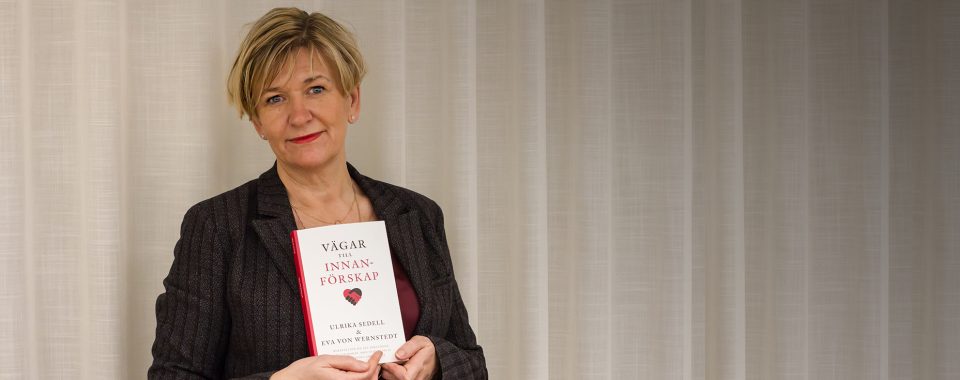
How to lead change for integration in the public sector
We interviewed Ulrika Sedell – leadership developer, lecturer and author of the book Bortom glastaket (Beyond the Glass Ceiling) and Vägar till innanförskap (Paths to Inclusion). This autumn Ulrika will be a guest contributor to SSE Executive Education’s Executive Management Program for the Public Sector on the theme of how the public sector can learn from the rest of society when it comes to integration. Based on interviews with successful Swedish executives and conclusions about approaches that work, she aims to give hope and agency to leaders of integration projects. Below are a selection of inspiring cases, coupled with handy tips for leaders in the public sector.
Integration is a key issue for our municipalities and authorities, who are forging ahead under varying conditions. However, many leaders of change management projects like this encounter fierce opposition and feel hamstrung by rigid structures. The book Vägar till innanförskap, which Ulrika Sedell co-wrote with Eva von Wernstedt, examines various examples of successful integration projects as a counterpoint to the current social debate with its strong focus on negativity and hopelessness.
Focus on outcomes first – processes and rules second
CASE: RESIDENTIAL HOME IN LJUNGBY
Anette Ragnarsson manages a residential home for unaccompanied child migrants in Ljungby Municipality. According to national rules, residents must leave the home when they turn 18, which means that many young people are forced to move out and fend for themselves before they have completed upper secondary school or found a job. They are also often moved to other municipalities when they leave the residential home, which means there is no time for the original municipality to enjoy any of the benefits of the investments they have made so far, in the form of trauma therapy, studies and so on. Many young people are let down by the system.
Anette has taken a stand against the age limit of 18 and insisted that the young people at the home she runs should be able to stay until the age of 21 if they so wished. She has also put more resources into jobseeking activities such as interview training. The result is that a massive 97% of the young people have a permanent job when they leave the home at 21 to stand on their own two feet – which is a long way above the national average. The extra time and support makes all the difference in ensuring that the municipality’s work and investment delivers a positive return. Plus it puts the young people on a very different footing as regards their future in society.
According to Ulrika, Anette is a typical example of the powerful focus on goals that shines through in many of the successful integration projects. Anette let the desired outcome determine her course of action.
“This kind of person gains energy and resilience from a goal that goes beyond themselves. You could almost see them as a ‘hidden resistance movement’ – if the rules don’t work, they find a way around them.”
Don’t let the structures stand in the way of collaboration and new formats
CASE: IT GUIDES, ÖREBRO
Gunilla Lundberg is a social entrepreneur in Örebro. She was struck by the fact that newly arrived migrants at upper secondary school in Örebro were finding it difficult to get summer jobs. Like other leaders of successful projects, Gunilla focused on the resources that existed rather than those that didn’t, and the young people proved to be very good at computers and the internet. This marked the start of library sessions on computing skills, where young people taught the municipality’s older residents to use computers, mobile phones and digital services. This was a highly successful initiative that did great things for relations between different groups, as well as integration and digitalization – the latter being another important task for our municipalities.
More flexible ways of running projects and organizations have been around in the business world for many years, including Lean, other agile working practices and project and network-based organizations. However, our public sector organizations often remain strictly siloed according to function. Many municipalities have discrete units that focus on a particular group – such as socially excluded people, children, older people, and so on. This isolation can make it difficult to see the bigger picture and connect groups and needs to each other, a key condition for generating integration and inclusion, according to Ulrika.
At the same time, she is careful to stress that public operations need to have more oversight and controls than businesses, for reasons of legal compliance and democracy.
“But you have to be able to draw distinctions here. What is set in stone legally and where can I allow room to be creative and do things differently? Without running the risk of breaking the law.”
The executives interviewed in the book are more likely to cherry-pick tactics and practices from the business world, the public sphere and civil society organizations. And Ulrika believes this is an approach that more people in the public sector should learn from.
Build on what already exists, rather than focusing on what is lacking
It is the norm here in Sweden that everyone must complete the whole process of compulsory school, upper secondary school, high education and so on, in order to become qualified for various jobs. However, people who come to Sweden from abroad vary widely in their school background and age, making it problematic to slot them comfortably into the Swedish system. And this leads to many of them being excluded, living on social benefits and feeling isolated instead of having a natural route into society, learning Swedish, etc. Their children also risk becoming more isolated because their parents find it difficult to communicate with society.
However, the executives that Ulrika and Eva interviewed don’t just focus blindly on what skills people lack. Instead, they ask “what can you do?” and go on from there.
CASE: YALLA TRAPPAN, MALMÖ
Kristina Merker-Sisjö worked at ABF, Sweden’s largest adult liberal education association, in Skåne, where she and others asked: What happens to the ‘invisible’ women, the ones not in work or education? To find out, she went and knocked on doors in the Rosengård area of Malmö and asked women in this position what they had to offer – things they were already proficient in, regardless of whether they could speak Swedish. The most common responses she got were that they were good at cooking, cleaning or sewing. The resulting initiative looked at these resources and ensured that the women received professional training in these areas.
The result was Yalla Trappan, a collective of around 70 women who make a living for themselves via catering, sewing services (for IKEA and others), office cleaning and so on. They charge market prices for their services but are open about the fact that they need a little more time to get to grips with new jobs – for example when it comes to reading manuals, learning alarm systems, etc. But in return, the businesses that use Yalla Trappan are free to promote the fact that they support the project.
Don’t allow unwieldy structures and funding systems to stand in the way of success
The successful IT Guides initiative in Örebro has now been rolled out in eight more municipalities, but when Gunilla Lundberg first went to her municipality with her expansion proposal, there was no obvious point of contact for this type of initiative, because it crossed departmental boundaries.
And Yalla Trappan in Malmö has saved the municipality SEK 180 million in six years through lower costs and new revenues. If the project had been in the commercial sector, it would have spread across every municipality in Skåne by now, and it would have happened at a dizzying pace, according to Ulrika.
“If you have an idea in the business world that proves to be profitable, you scale it up. It’s so obvious. But not in local public sector organizations.”
In addition to slower processes and stricter departmental divisions, there is also the fact that profitability is measured very differently in the public sector, compared with the private sector. Getting funding for this type of initiative is therefore a challenge. According to many of the book’s interviewees, there is thus a need for alternative, more flexible forms of funding.
What are the traits of those who succeed?
An extremely strong focus on goals and civil courage – the latter often linked to a sense of working to achieve an important, higher purpose. They decide on a goal and do everything they can to work out how to get there, even if it means circumventing rules and policies that restrict their chances of success. They usually encounter a great deal of frustration and setbacks along the way, but another important and consistent trait is the attitude that setbacks are an opportunity to learn, rather than a mark of failure. They set the initiative in motion and change course if it doesn’t work.
“This brings us to a crucial point. How do you approach and deal with failure. Do you give up or learn from your mistakes and try something new?”
Tips for leaders of change management work with a focus on integration
- The book’s great examples show that there is plenty you can do, but you shouldn’t perhaps rely too much on previous experience. Keep your eye on the goal and have the courage to challenge existing structures in order to reach the finish line.
- Think like an entrepreneur and show agile leadership to combat the inertia in the processes. Get started, appraise the situation and make changes where necessary.
- Network across departmental boundaries and bring together different stakeholders in society to find a way forward together.
- Give the people in your organization who are particularly passionate about these issues room to maneuver.
- Take stock of the resources and skills that already exist – and start building from there.
Order the book “Vägar till innanförskap” here (book available in Swedish only) >>


